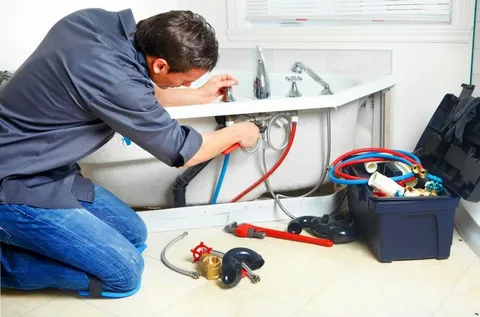What Should You Know Before Starting a Plumbing Installation Project?
A plumbing installation project can be an essential part of a home renovation or new construction. Whether you’re installing new pipes, fixtures, or appliances, it’s vital to approach the task with the right knowledge. Plumbing projects, if not done correctly, can lead to costly repairs and potential damage to your property. Below are some key things to consider before starting a plumbing installation project.
1. Understand the Scope of the Project
Before you begin any plumbing installation project, it’s crucial to understand the scope and the specific work involved. Are you installing a new water heater, replacing old pipes, or setting up a new bathroom or kitchen? The scope of your project will determine the tools, materials, and skills needed to complete it successfully. Take time to break down the project into smaller tasks to ensure you don’t overlook any important steps.
2. Familiarize Yourself with Plumbing Codes
Every city or municipality has plumbing codes that must be followed to ensure safety and proper function. These codes cover everything from pipe size to venting requirements. It’s essential to familiarize yourself with these regulations before starting your plumbing installation. Failing to comply with local codes can result in costly fines and may require you to redo the work. Check with your local building department or hire a professional to ensure that your project meets the necessary standards.
3. Have a Detailed Plan
A detailed plan is crucial for any successful plumbing project. Sketch out a blueprint of the area where the plumbing will be installed, including all pipes, fixtures, and appliances. This plan will help you visualize the layout, determine pipe sizes, and ensure there are no potential issues before installation begins. Additionally, this plan will come in handy if you need to apply for permits or explain the project to a plumber if you decide to hire one.
4. Know Your Tools and Materials
Knowing which tools and materials you’ll need for the plumbing installation project is essential. Standard plumbing projects often require a pipe cutter, wrench set, pipe fittings, sealants, pipe insulation, and possibly a soldering kit if you’re working with copper pipes. Understanding the materials and tools you need beforehand will help avoid delays or confusion during the installation process. Additionally, ensure you choose high-quality materials that meet the necessary plumbing standards to ensure durability and safety.
5. Safety First
Safety should always be your top priority when performing any plumbing installation. Plumbing projects often involve heavy tools, hot water, or even working in tight spaces. Make sure to wear appropriate safety gear such as gloves, goggles, and durable clothing. If working with soldering or cutting tools, ensure you follow the safety guidelines to avoid injury. Additionally, ensure that you turn off the water supply and gas (if necessary) before starting any installation work to prevent accidents.
6. Know When to Call a Professional
While some plumbing installation tasks can be done by a homeowner with basic plumbing knowledge, others are more complex and require a licensed plumber’s expertise. If you’re uncertain about the complexity of your project or if it involves gas lines, electrical components, or requires knowledge of local plumbing codes, it’s best to call in a professional. Professional plumbers can ensure that the installation is done correctly, safely, and in compliance with local regulations.
7. Prepare for Potential Challenges
Even the most well-planned plumbing installation projects can come with unexpected challenges. Issues such as pipe obstructions, uneven water pressure, or unforeseen leaks can arise during installation. It’s essential to remain patient and flexible, as troubleshooting will likely be necessary. Have a contingency plan in place to address these challenges, and be prepared to seek professional help if the situation gets out of hand.
8. Budget for the Project
Plumbing installations can be costly, especially if they require advanced materials or professional assistance. It’s important to set a realistic budget and account for all the necessary materials, tools, labor, and any unexpected costs that may arise. A detailed budget will help you avoid overspending and ensure that you have the necessary resources to complete the project. Don’t forget to include the cost of any required permits or inspections in your budget.
9. Know the Water Supply System
Before starting your plumbing installation, it’s crucial to understand how your home’s water supply system works. Know where the main water shutoff valve is located, as well as any other shutoff valves for specific areas or appliances. If you’re installing a new fixture or appliance, ensure you know how to connect it to the existing water supply system properly. Having a clear understanding of the water supply system will help you avoid mistakes and make troubleshooting easier.
10. Consider Future Maintenance Needs
When planning a plumbing installation, think about future maintenance and ease of access. For example, if you’re installing pipes in an area that’s difficult to reach, consider how you might repair or replace them in the future. Additionally, choose materials and fixtures that are easy to maintain and clean. Regular maintenance will prolong the lifespan of your plumbing system and help prevent costly repairs down the road.
11. Account for Ventilation and Drainage
Proper drainage and ventilation are critical components of any plumbing system. Before starting your project, make sure you understand the basic principles of drainage and venting. Poor ventilation or incorrect drainage can cause problems like foul odors, slow drains, or even water backups. Ensure that your plumbing installation allows for proper airflow and water drainage, and be mindful of local building codes when designing your system.
12. Plan for Permits and Inspections
Some plumbing projects require permits and inspections, depending on local regulations and the complexity of the installation. For example, replacing a water heater or installing a new sewer line typically requires a permit. Check with your local building department to find out which permits are necessary before starting your project. If required, schedule an inspection after the installation to ensure the work meets safety standards.
FAQs
1. Do I need a permit for plumbing installation?
It depends on the project and local regulations. Simple tasks like installing a faucet may not require a permit, but major installations, such as replacing pipes or adding a water heater, usually do. Check with your local building department for specific requirements.
2. Can I install plumbing myself?
Many basic plumbing tasks, such as installing faucets or replacing drainpipes, can be done by a homeowner with some experience. However, more complex tasks such as installing water lines, dealing with gas connections, or plumbing for a new home should be done by a licensed plumber.
3. How do I ensure my plumbing installation is up to code?
To ensure your installation meets local plumbing codes, you can check with your local building department for the specific regulations in your area. Hiring a professional plumber is another way to guarantee that your work complies with all the necessary codes.
4. What tools do I need for a plumbing installation?
Some of the basic tools for plumbing installations include pipe cutters, adjustable wrenches, pipe insulation, pipe fittings, a soldering kit (if using copper pipes), and pliers. The tools you need will depend on the type of installation you’re undertaking.
5. How much does plumbing installation cost?
The cost of a plumbing installation depends on the type and scope of the project. Small tasks like replacing a faucet can cost under $100, while more extensive installations, such as replacing pipes or adding a new water heater, can range from a few hundred to several thousand dollars.


